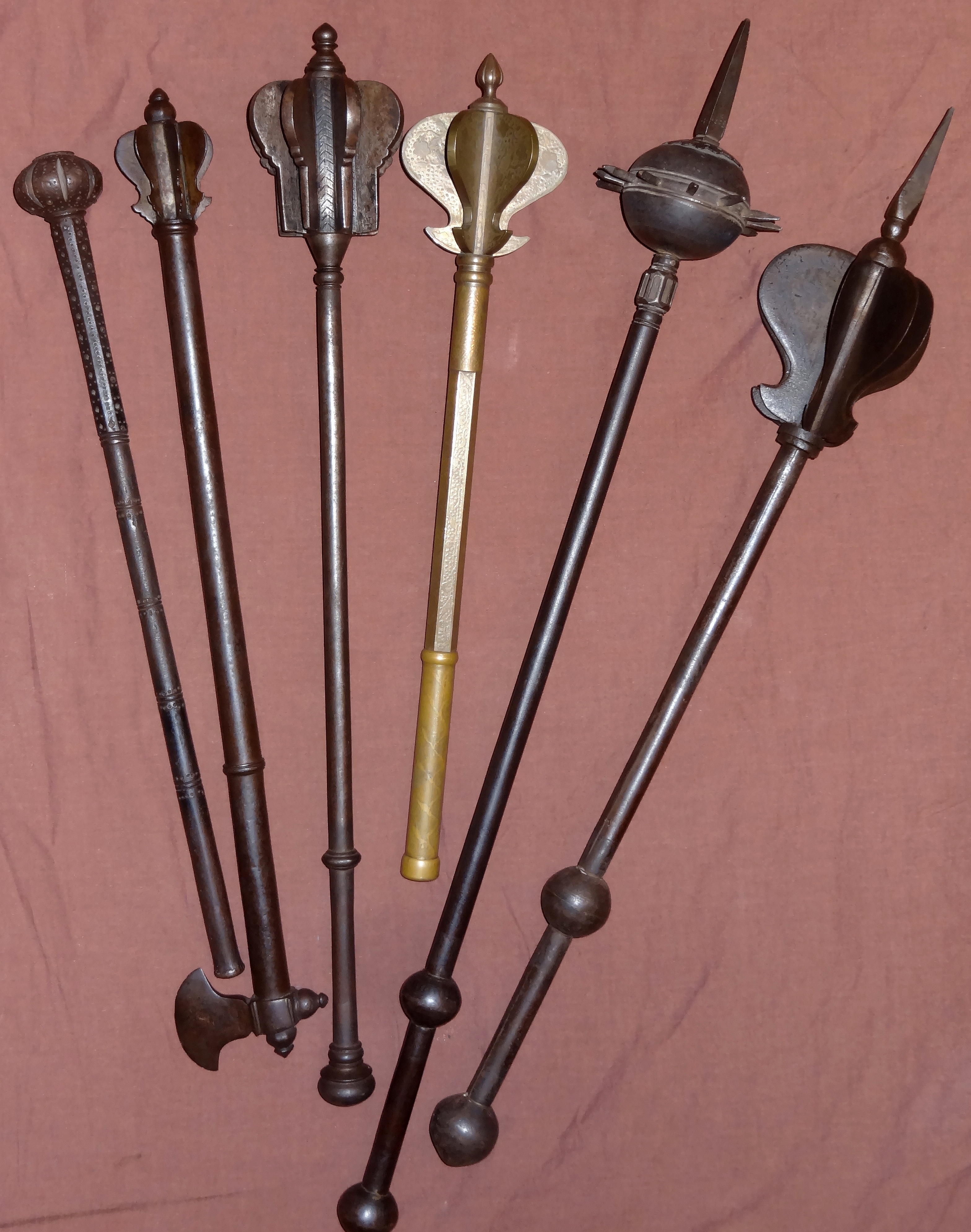|
Djsr (arm With Powerstick)
The ancient Egyptian ''horizontally-outstretched'' Arm with powerstick is a hieroglyph with the meaning of "force", or "power of action". As a baton, or macehead. Power is obvious, but the origins may have also had references to magic, or the idea of driving-off bad spirits or omens. A "sacred", or protected area is therefore created, by the action implied and used by the "Arm with Power stick". A term used in later Ancient Egypt was 'ta djeser', the 'land-sacred'. Thus temples, or mortuaries, or areas for ritual could be created. Language usage of "Arm with powerstick" The basic language equivalent of Arm with powerstick hieroglyph is 'djeser', or 'tjeser', meaning "holy", or "sacred". The hieroglyph is also used as a determinative to emphasize a word, for example line 6 of the Rosetta Stone, uses one of the commonest words with the Arm-throwstick: 'nekht' , (i.e. "to be strong", "powerful"). In Ptolemy V's Rosetta Stone, line 6: ''..."Ptolemy, the Avenger of Baq-t-(Egypt), t ... [...More Info...] [...Related Items...] OR: [Wikipedia] [Google] [Baidu] |
Label (archaelogy)
A label (as distinct from signage) is a piece of paper, plastic film, cloth, metal, or other material affixed to a container or product, on which is written or printed information or symbols about the product or item. Information printed directly on a container or article can also be considered labelling. Labels have many uses, including promotion and providing information on a product's origin, the manufacturer (e.g., brand name), use, safety, shelf-life and disposal, some or all of which may be governed by legislation such as that for food in the UK or United States. Methods of production and attachment to packaging are many and various and may also be subject to internationally recognised standards. In many countries, hazardous products such as poisons or flammable liquids must have a warning label. Uses Labels may be used for any combination of identification, information, warning, instructions for use, environmental advice or advertising. They may be stickers, perm ... [...More Info...] [...Related Items...] OR: [Wikipedia] [Google] [Baidu] |
Gardiner's Sign List
Gardiner's Sign List is a list of common Egyptian hieroglyphs compiled by Sir Alan Gardiner. It is considered a standard reference in the study of ancient Egyptian hieroglyphs. Gardiner lists only the common forms of Egyptian hieroglyphs, but he includes extensive subcategories, and also both vertical and horizontal forms for many hieroglyphs. He includes size-variation forms to aid with the reading of hieroglyphs in running blocks of text. In contrast, for example, the Budge Reference has about 1,000 hieroglyphs listed in 50 pages, but with no size variations. Gardiner does not cross-index signs; once put on the list, other significant uses may be overlooked. One example of this is G16, nbtỉ, the ideogram for the Two Ladies, goddesses Wadjet as the cobra and Nekhbet as the white vulture. These are the protective and patron goddesses of the separate Egyptian kingdoms that joined into ancient Egypt, who were both then displayed on the uraeus of Wadjet when the unification ... [...More Info...] [...Related Items...] OR: [Wikipedia] [Google] [Baidu] |
Neb (hieroglyph)
Neb may refer to: *Neb, transcription of an ancient Egyptian hieroglyph of a basket, Gardiner sign V30 *Neb, the pen name of British political cartoonist Ronald Niebour (1903–1972) NEB may refer to: *Nose in Everyone's Business, a busybody or gossip *National Enterprise Board, a UK government body from 1975 to 1981 *National Energy Board, a Canadian independent federal agency from 1959 to 2018 *National Examination Board (Nepal), organizes the Higher Secondary examination in Nepal * Nebulin, a large protein found in muscles *New England Biolabs, U.S. corporation, produces and supplies reagents for the life science industry *New English Bible, a translation of the Bible, first published as a complete edition in 1970 *Niederbarnimer Eisenbahn, a train company in Germany *North Equatorial belt, a Cloud pattern on Jupiter *Nuclear Energy Board, an Irish government agency from 1973 to 1992 * Noise Equivalent Bandwidth, a measure of the bandwidth of an electrical filter * Nudged Elas ... [...More Info...] [...Related Items...] OR: [Wikipedia] [Google] [Baidu] |
Stele
A stele ( ),Anglicized plural steles ( ); Greek plural stelai ( ), from Greek , ''stēlē''. The Greek plural is written , ''stēlai'', but this is only rarely encountered in English. or occasionally stela (plural ''stelas'' or ''stelæ''), when derived from Latin, is a stone or wooden slab, generally taller than it is wide, erected in the ancient world as a monument. The surface of the stele often has text, ornamentation, or both. These may be inscribed, carved in relief, or painted. Stelae were created for many reasons. Grave stelae were used for funerary or commemorative purposes. Stelae as slabs of stone would also be used as ancient Greek and Roman government notices or as boundary markers to mark borders or property lines. Stelae were occasionally erected as memorials to battles. For example, along with other memorials, there are more than half-a-dozen steles erected on the battlefield of Waterloo at the locations of notable actions by participants in battle. A traditio ... [...More Info...] [...Related Items...] OR: [Wikipedia] [Google] [Baidu] |
198 BC
__NOTOC__ Year 198 BC was a year of the pre-Julian Roman calendar. At the time it was known as the Year of the Consulship of Catus and Flamininus (or, less frequently, year 556 '' Ab urbe condita''). The denomination 198 BC for this year has been used since the early medieval period, when the Anno Domini calendar era became the prevalent method in Europe for naming years. Events By place Roman Republic * After his election to the consulship, Titus Quinctius Flamininus is chosen to replace Publius Sulpicius Galba Maximus as the leading Roman general in Macedonia. He then crosses into Macedonia with his army. Flamininus realizes that future peace depends on breaking the power of king Philip V of Macedon, not merely humbling him. He secures the backing of the Achaean League and then opens peace negotiations with Philip at Nicaea in Locris. Though peace proposals are submitted to the Roman Senate, the talks break down, and fighting resumes. * Titus Quinctius Flamininus' forc ... [...More Info...] [...Related Items...] OR: [Wikipedia] [Google] [Baidu] |
Tomb Relief
A tomb ( grc-gre, τύμβος ''tumbos'') is a repository for the remains of the dead. It is generally any structurally enclosed interment space or burial chamber, of varying sizes. Placing a corpse into a tomb can be called ''immurement'', and is a method of final disposition, as an alternative to cremation or burial. Overview The word is used in a broad sense to encompass a number of such types of places of interment or, occasionally, burial, including: * Architectural shrines – in Christianity, an architectural shrine above a saint's first place of burial, as opposed to a similar shrine on which stands a reliquary or feretory into which the saint's remains have been transferred * Burial vault – a stone or brick-lined underground space for multiple burials, originally vaulted, often privately owned for specific family groups; usually beneath a religious building such as a church ** Cemetery ** Churchyard * Catacombs * Chamber tomb * Charnel house * Chur ... [...More Info...] [...Related Items...] OR: [Wikipedia] [Google] [Baidu] |
First Dynasty Of Egypt
The First Dynasty of ancient Egypt (Dynasty I) covers the first series of Egyptian kings to rule over a unified Egypt. It immediately follows the unification of Upper and Lower Egypt, possibly by Narmer, and marks the beginning of the Early Dynastic Period, a time at which power was centered at Thinis. The date of this period is subject to scholarly debate about the Egyptian chronology. It falls within the early Bronze Age and is variously estimated to have begun anywhere between the 34th and the 30th centuriesBC. In a 2013 study based on radiocarbon dates, the beginning of the First Dynasty—the accession of Narmer (commonly known as Menes)—was placed at 3100BC give or take a century (3218–3035, with 95% confidence). The dynasty Information about this dynasty is derived from a few monuments and other objects bearing royal names, the most important being the Narmer Palette and Narmer Macehead, as well as Den and Qa'a king lists. No detailed records of the first two dynas ... [...More Info...] [...Related Items...] OR: [Wikipedia] [Google] [Baidu] |
Den (Pharaoh)
Den, also known as Hor-Den, Dewen and Udimu, is the Horus name of a pharaoh of the Early Dynastic Period who ruled during the First Dynasty of Egypt. He is the best archaeologically-attested ruler of this period. Den is said to have brought prosperity to his realm and numerous innovations are attributed to his reign. He was the first to use the title "King of Upper and Lower Egypt", and the first depicted as wearing the double crown (red and white). The floor of his tomb at Umm El Qa'ab near Abydos is made of red and black granite, the first time in Egypt this hard stone was used as a building material. During his long reign he established many of the customs of court ritual and royalty used by later rulers and he was held in high regard by his immediate successors. Length of reign The Ancient Egyptian historian Manetho called him “Oúsaphaîdos” and credited him with a reign of 20 years,William Gillan Waddell: ''Manetho (The Loeb Classical Library, Volume 350)''. Harvard U ... [...More Info...] [...Related Items...] OR: [Wikipedia] [Google] [Baidu] |
Egyptian Language
The Egyptian language or Ancient Egyptian ( ) is a dead language, dead Afroasiatic languages, Afro-Asiatic language that was spoken in ancient Egypt. It is known today from a large Text corpus, corpus of surviving texts which were made accessible to the modern world following the decipherment of ancient Egyptian scripts, decipherment of the ancient Egyptian scripts in the early 19th century. Egyptian is one of the List of languages by first written accounts, earliest written languages, first being recorded in the Egyptian hieroglyphs, hieroglyphic script in the late 4th millennium BC. It is also the longest-attested human language, with a written record spanning over 4000 years. Its classical language, classical form is known as Middle Egyptian, the vernacular of the Middle Kingdom of Egypt which remained the literary language of Egypt until the Egypt (Roman province), Roman period. By the time of classical antiquity the spoken language had evolved into Demotic (Egyptian), Dem ... [...More Info...] [...Related Items...] OR: [Wikipedia] [Google] [Baidu] |
Mace (bludgeon)
A mace is a blunt weapon, a type of club or virge that uses a heavy head on the end of a handle to deliver powerful strikes. A mace typically consists of a strong, heavy, wooden or metal shaft, often reinforced with metal, featuring a head made of stone, bone, copper, bronze, iron, or steel. The head of a military mace can be shaped with flanges or knobs to allow greater penetration of plate armour. The length of maces can vary considerably. The maces of foot soldiers were usually quite short (two or three feet, or sixty to ninety centimetres). The maces of cavalrymen were longer and thus better suited for blows delivered from horseback. Two-handed maces could be even larger. Maces are rarely used today for actual combat, but many government bodies (for instance, the British House of Commons and the U.S. Congress), universities and other institutions have ceremonial maces and continue to display them as symbols of authority. They are often paraded in academic, parliamentary or ... [...More Info...] [...Related Items...] OR: [Wikipedia] [Google] [Baidu] |






